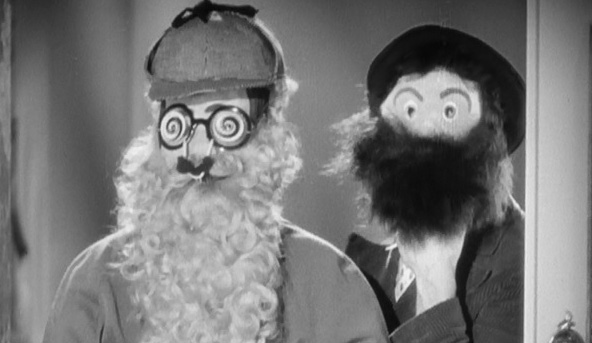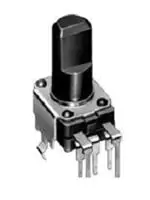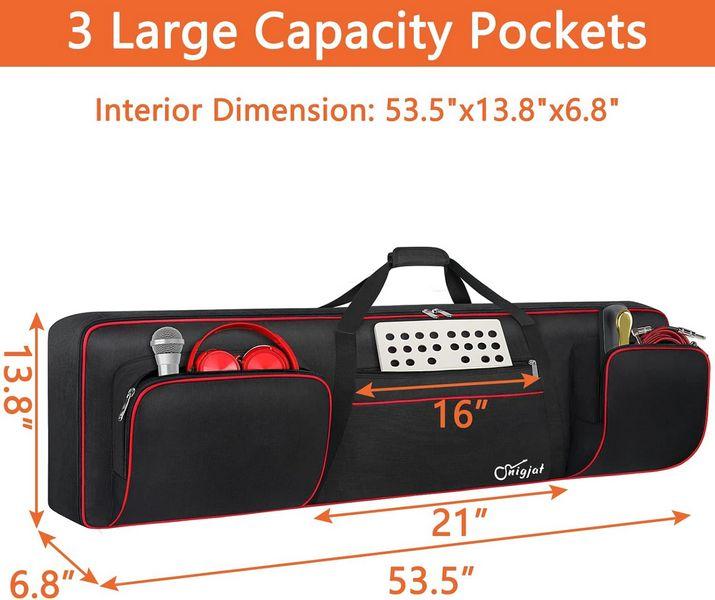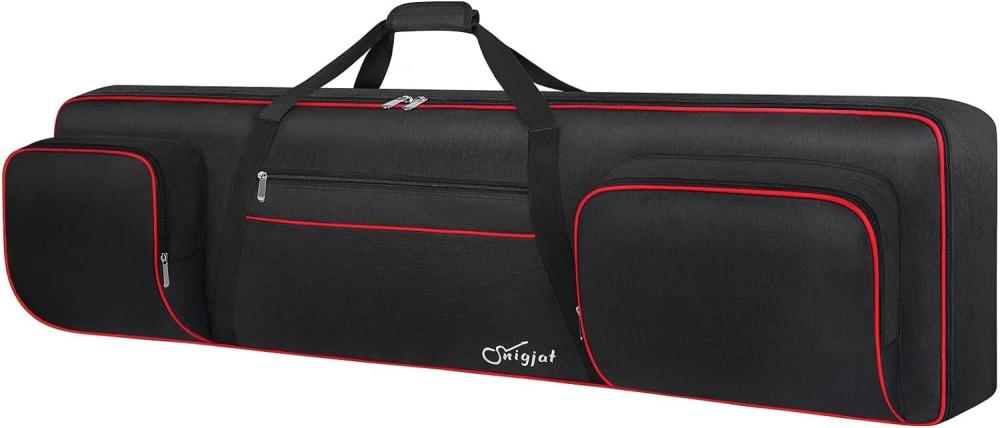-
Posts
4,145 -
Joined
-
Last visited
Content Type
Profiles
Forums
Downloads
Everything posted by Jokeyman123
-

CTRLR Casio XW-Editor v.01.00 for Windows/Mac
Jokeyman123 replied to Vcombo's topic in General XW Series Discussion
This is bumping me into my Google account-then even though I log in, access is denied by Google-it describes that I need to request access although it does not say who i am requesting access from. I have been using the ctrlr software or awhile, works well and despite having the factory Casio XW editor installed, this looks rather nice, a different approach and several much clearer graphics for editing. quite frankly-I am getting sick and tired of Google making use jump through hoops to access anything they have hi-jacked, but excuse me, that's a rant and I'll shut up now, no reflection on you, just on Google and their monopolizing the Internet. -

MZ X 500 versus CTX 5000 - is the price difference worth it?
Jokeyman123 replied to Mayo Vox's topic in MZ-X500 / MZ-X300
Mayo-at the risk of admitting I don't have either-but the my PX560 is fairly similar to the MZ-X500 as far as touchscreen features-but more recording features and sampling than the 560-I would download and study for a few minutes (or more) both manuals available at the Casio website-and try to find user posted demos of both on Youtube-but listen with good headphones through your computer, will give you a more accurate approximation of the tones compared in each. If I had to choose-I would select the MZ almost based entirely upon the touchscreen, which makes accessing tones and many other features so much easier to work with. I believe both have the ability to create user rhythms (auto-accompaniment patterns) and the sampling may be something worthwhile to you which the CTX series does not have. And the quality of the tones-the CTX may have a slight edge with some but not all tones-I think for example the acoustic and electric pianos will compare fsavorably-and the MZ has organ drawbars again missing on the CTX. From my use of similar drawbars with my XW-P1, it does add quite a bit of direct access to organ variations, a real plus for the style of music I play. One other consideration-the CTX series are still (so far) readily accessible in the marketplace from what I see. The MZ-X series is now pretty rare and will only become more so. If you can grab one of these at a good price, you might not see another for a long time. If you don't like it the CTX will still be around (I'm guessing) in😜 the marketplace-and you can sell me your MZ-X500 cheap if you don't like it.... -
Thanks Back on Board. that clinches it. Back to Casio repair. Yikes-accidentally checked "solution" in my post. meant Back on Board as the solution. how can I change this Brad?
-
Update to anyone interested. I decided to fully disassemble the 560-I've done this before to add a few mods to quiet the keys. I physically inspected everything internally before handing this over to Casio service or another tech. I could spot nothing obvious that might be causing this malfunction. All cables and wiring are perfect-no damage to the IC boards or components, never abused this so was pretty sure I wouldn't find anything out of place. Wiring harnesses from the speakers to the boards are relatively simple. I did not diagnose with a scope or multimeter as everything else works perfectly, I did not see a need. I suspect a software error but despite repeated factory restoring and reflashing the firmware, nothing worked. All other touchscreen functions, sounds, recording etc. are fine. I also disconnected the headphone jack completely at the IC board, thinking a short might be causing this but again no luck. Time to turn it over to someone else. If the amplifier board is bad somewhere, it will need replacing by Casio anyway, since 1) I am not sure a full board replacement would fix this and 2) even if it could, I have no way of obtaining something like this outside of Casio, which I'm hoping they will. I have had 2 successes with Casio repair-one to restore my older XW firmware which was done at the Dover facility and a CDP230 piano I could not repair at the same place-neither could they. For the price of diagnosing that one, they gave me another working CDP and kept the broken one, not a bad deal considering neither had warranty coverage anymore. This is my last 88-key weighted Casio, I've sold my others. I use the 17-track recorder all the time, so seriously considering replacing it with another one. After all these years, I was still finding programming/editing/recording to be one of the easier boards to work with, and it sounds right up there with anything else I've owned or auditioned.
-
Line out is fine, I haven't checked the line-in to see if the speakers respond to an external source. I also just disconnected the internal headphone jack assembly inside the left endcap to see if that might be the problem, but no. The other possibility-I've always handled this reasonably carefully-no rough accidents. Seems so odd as I've never had any problem like this with any Casios with built-in sound systems but I guess it can happen over time. I've disassembled this before, all connections were very secure-and by design will not disconnect easily based upon my prior internal examinations. I will try re-loading the firmware-I am on 1.16 since a few years ago when it originally was released. It is odd that this just happened when I exercised the software speaker on/off function which initially worked fine, then not. Will call Casio in Dover, see what they say about getting it to them for service if I can't get it right. Thanks Andrew. Amended to this post-just checked line inputs-are working but still only getting audio through line outs and headphone jack. Re-installed firmware 1.16-still no change. I have never had a Casio with speakers go completely dead like this-in over 20 years of using, playing many. My PX560 has been very reliable for a long time. If it weren't for the still 1000 dollar price tag, I'd buy another one.
-
Has anyone here had recent experience with Casio authorized service-looks like my PX560 speaker system stopped working suddenly and will need to be serviced. Very odd, no apparent reason why this should have happened. I had recently turned the external speaker circuit off with the setting in the menu. I just used it as a controller like this and it was fine, but now no go. everything else still working A+. I can get it to Casio in Dover, NJ but just checking in to see if anyone has had anything repaired there recently. I've already tried the usual remedies-factory reset-cleaning the headphone jack which works-the audio outputs work fine. Tried turning speakers on/off with the menu settings. several times still nada. Always used the Casio power supply. I have an alternative tech service if I need to, but prefer Casio-not for warranty as that ship sailed a long time ago, I've had this for at least 7-8 years now. Just had a service called "healingmass" restore my old RM1X, did a fantastic job troubleshooting and repairing several circuits and components that were no longer working but would have to ship to their location in Illinois, am hoping to go local if possible, why I'd prefer going to Dover, NJ and that this is a Casio. Thanks.
-
I know the PX560 has a variety of fixed tuning tables including a microtonal. But I don't see any function to create your own with individual keys. Has been a function of some keys I've owned. I was a fan of Harry Partch, who created his own instruments and designed his own tunings for them.
-
Not sure this a bug-it might be part of the architecture of the PX560-the way it is designed (I think) although the manual is not clear about this. The effects busses are as you have found-there are limitations. Many of us discovered awhile ago-only one upper voice from the main menu will retain any effect-if you layer or split a voice-only one part of that will have the effect active. I never noticed that the "delay" setting within the mixer does not affect the drumkits-and again the manual does not make this clear. So maybe it is a bug. I can only guess why this is so-possibly because assigning delay efx to each separate voice in the kit was a design choice-would I necessarily want all my drum voices to have a delay, maybe not. But delay is considered a "global" effect like reverb and chorus, so it should work the same way. Can you assign individual drum tones in a kit to reverb/chorus or none, I never tried. I know I've had to store registrations to get certain effects and knob settings retained for using with specific tones-but again there will be only one effect active from the main screen. And I'll have to check this-but from the mixer, I don't think individual effects programmed into individual tones-will be retained once in the mixer settings, for using in the song recorder-or for that matter when using the PX560 as a multi-channel tone module. I think you can only count on the 3 global effects-reverb, chorus and delay when in mixer/song recorder mode. I seem to remember, when I did a cover of "Telstar" with the PX560 using around 6 tracks of recording, I was only able to add a "Leslie" organ DSP to one track and I think it was the "system" track. None of the other tracks let me use the Leslie DSP-even though it was programmed into my individual organ tone. Glad you mentioned this, if it is a bug maybe it needs to be looked at. I managed one firmware update! I seriously think though tht it is a built-in limitation of how much the PX560 CPU csan do at any one time. The PX560 I am sure is still being supported and sold by Casio through various vendors AFAIK. I guess if you need more specific and specialized effects routings/settings-either software or a more advanced workstation is the only way I know to get individual multi-channel inserts for each track, or even with a simple split or layer. Not sure about the newest Casios, the PX560 is my newest.
-
Ooooooo!!!!!!......he had the rarer gold-tinted XW (envy). I'd barely know how to switch mine on 10 years ago if it wasn't for dear Mike Martin, got to love him, seriously. Coincidentally I just spent about 2 hours yesterday revisiting many XW functions including all hex layers-have uploaded a few simple "analog" type sounds using hex layers in the PX560 hearing how it compares to the XW hex's. Not to be an overt fanboy-I am but despite what others may say the acoustic and electric pianos are a pleasant surprise-this compared to my Korg M3, Alesis Fusions, endless huge acoustic piano soundfonts and the selection of FM pianos in the Yamaha QY100 and SY77....I'll stop now. No I won't just had regular coffee for a change, not decaf uh-oh.. Chas got me going with my AM coffee.....re-auditioned all the organ tones while at it. Even with all this other equipment including a Ferrofish 4000b (very nice), Line 6 Rotomachine also no slouch plus my old Equinox which has killer organ options, why I've kept it for almost 30 years... Was not disappointed in the XW organ tones and built-in leslie effect. All this other stuff may have advantages in terms of programmability for organ tones, there is a depth in some of these machines that can be achieved with outboard DSP pumped into the XW, or plugging the XW outputs back into it's inputs (and from 2013 thank you Gnomo Alegre, AlenK and a few others) but with the complexity of these others it is super nice to be able to push a button to add 2 layers of percussion and switch the Leslie effect from slow to fast the same way. Simplicity is sometimes best. Trying to cut back on music equipment, every time I re-visit the XW it stays. John Belushi said, "It's not over until I say it is!!!!! Could be the XW talking.
-
Just noticed-this apparently is not a setting that is saved with auto resume. I looked for a listing of what is saved with auto-resume-the appendix for the 560 shows which settings are saved-but the metronome is not one of them, There is also no provision for saving that "global" metronome setting in a registration. The metronome as used within the song/midi recorder is also set independently of the global setting-and can only be incremented at its "shortest" setting to 2/4 time. there is no setting for "1/4" which would give you an even quarter note beat with no +accent-which would have been very handy for recording in "free' time. A limitation yes. Not a deal-breaker for me though, your use might be different. You can however record and set the metronome in 13/8 time if you decide to get a little looney, or want to be driven to it.
-
Power off is fine on mine. I've also done alot of editing with several tones, never noticed a problem with any of the envelopes but maybe I wasnt paying much attention at the time. Also went through every drumkit, factory and edits-could not duplicate the hi-hat cutoff problem, must have been a temprorary software glitch. Mine's been pretty reliable but then I've never dropped it down the stairs... Just did some recent uploads in the 560 section for user tones-all hex layers trying to capture some of the old essence of the CZ's using the simple sine, sawtooth, pulse and square waves if you are interested ID. I set up the 3 control knobs to vary cutoff, resonance and detuning-to emulate as close as I could older analog synths bu with hex layer tones I created/uploaded. Without realizing quite what I was doing-discovered I could create a "superheterodyne" effect with these tones-with the 560-driving individual hex layers into super-oscillation even approaching ring modulation, pretty wild. But that's another post, giving myself some free publicity.....
-
One other random thought-not all thumb drives are created equal-even the Sandisk "Cruzer" drive I use can be erratic- in the PX560, why I don't know. Sometimes it takes longer to be detected than others-sometimes it isn't detected at all, but overall seems OK, and this is a genuine, not counterfeit Sandisk with a decent transfer speed. I'm a lunatic, I test my drives with Crystal diskmark to see what the transfer speeds are for reading and writing to disk for csrds and thumbdrives. Grasping at straws here, but possibly the firmware "hicupped" in the process of transferring over from the thumb drive. I've worked in computer technology long enough to know-anything that can go wrong, no matter how seemingly small or improbable, probably will. Why my network professor called Windows drivers "plug and pray". And in a binary transfer, even one lousy missed bit can cause a software problem like this. Good luck, keep posted.
-
Yep, you can see in my other post to you-I discovered this flaw when creating my own custom drumkits several years ago-and this is why this 1.16 update came to be and why I'm surprised you are still having this problem, which must be relted somehow although it has never happened with my PX560, and I've been playing it for severalyears since upgrading. I'll push it, and see if I can repeat your malfunction. I did not try the hi-hats on all the kits, but my drumkit edits are fine, I use the open hi-hat tone quite a bit. I deliberately created a drumkit for my "telstar" PX560 cover posted here somewhere-and had to use a pretty busy hi-hat track on this, open and closed, and did it after the version upgrade. Since Casio advises not to step backwards-I wouldn't try. Look up Korg M3 firmware posts-many users pooched their M3's by trying to revert to earlier firmware upgrades, even though Korg was late in mentioning this possibility. I have one, so I took this warning seriously.
-
Not good....never had that problem-use drums all the time. Have to review-don't recall if the 560 can arrange the drum map to cut off note sustain from hitting another key-to control the way a hi-hat would work or to imitate choking a crash cymbal but I see this isn't what's happening here. Try re-installing v1.16. You can't go back to an earlier OS once you update-true for almost every piece of gear I've owned. Unfortunate but true. I upgraded from V1.12-the original OS that came with mine-then went to 1.14 and finally to 1.16. Possibly jumping from your very early version to this last one has something to do with this? It shouldn't, as newest firmware should also include all prior updates through incremental changes-at least that's my understanding of the concept based on other music equipment I've updated. It's possible this newest update does not include earlier fixes which could be causing this problem. Would have to hear from someone at Casio officially to be sure. I don't have the original version update binaries to compare sizes, which would give a clue. If version 1.16 is much smaller than say v1.12 or 1.14.........we have a problem in Houston ground control as this might mean the other fixes are not in v1.16.
-
Brad is pointing you to the right solution. I discovered this several years ago-the only "bug" I've ever found in my PX560-and this is it. Check your firmware version-this was corrected in the last firmware update which is 1.16. Any firmware up to 1.15 will have this bug, and Casio corrected this when I found it and posted the problem here at this user group. It solved the problem I heard in your video. This is why there is a version 1.16 of the firmware, specifically to fix this. Sure wish Casio would add a few updates to the song recorder (hint) like some more cut and paste functions to tracks.....well can't hurt to ask.
-

Casio PX-120 - What's correct Potentiometer impedance?
Jokeyman123 replied to albenex's topic in General Privia Discussion
Check this link, right here at Casio from 2019-it is a 5K pot. Look at the last post, this poster bought one from Mouser electronics. You might find the identical pot somewhere else. https://www.casiomusicforums.com/index.php?/topic/17136-volume-knob-unresponsive/ -
I'm no expert, but I play guitar pretty regularly, or irregularly🤣. My best suggestion-get a real guitar-even an inexpensive one, or borrow one-and play around with it-even if you don't know how, you will get a better idea of how to imitate a guitar sound and playing technique. One of the most important things to keep in mind-the arrangement of notes when playing guitar will be much different than what you might be accustomed to with typical piano/keyboard chords or arpeggios, but it can be done. Years ago for college, I had to take a classical guitar book of etudes and transcribe these for playing on keyboard instruments, what fun..... For example-if I am strumming an "open" e minor chord on a guitar with standard E-A-D-G-B-E tuning-from low to high notes I am playing the low E string open-the note B on the A string, another E an octave above the low E string, finally with the last 3 strings G, B and E an open e minor chord, but in what is called "first inversion" meaning the "third" of the chord-the G note in this case the guitar G string, is at the root-then the B string and finally the high E string on the guitar. SO... in order to get a truly accurate sounding guitar-you would probably want to play the keys using this order of notes, not too hard. And each of the simplest "open" chords (chords closest to the "nutt" not the bridge) ends up being similar to this. The open D Major chord- if you only used the A-D-G-B and E strings, you would have to figure out which note of the chord is on each string-the A and D strings are open, but the G-B-and E strings end up being A-D-F sharp in that order. This would be useful only if you want to imitate a strum. Arpeggios a little easier since when I play an arpeggio on guitar I can vary whatever strings I want to pick. The other difficulty I've found-strumming a guitar-the timing of strings sounding for a strum is very close to instant-but just a tiny "hair" slower-very hard to imitate-and each string will not be evenly balanced as far as dynamics and sustain, which is fairly consistent with a keyboard-so you would have to have enough keyboard technique to imitate this difference in dynamics between strings, possibly by bringing out the lower strings more than the upper or the oppsite for strumming up. You can see, it almost becomes easier to learn to play the guitar! Add to that-do you want to sound like a flat-pick guitarist-or a fingerpicker without fingerpicks (fleshy tips) or one with fingerpicks on each finger! The variety of sounds from an accomplished (or even not so accomplished) guitarist is pretty daunting-and then-for classical guitar-I can play the exact same notes in several different positions-and the tone or timbre will be very different-listen to segovia or any classical guitarist and you will hear it, one of the beautiful aspects of classical guitar technique. So I guess-just use the pre-programmed sounds in the CTX with the added 'articulations" (how the string sounds on the initial attack-very important) programmed in for you, can sound pretty realistic without everything I've said. Sorry for the long post, you owe me a coffee.
-
Just configured something others may find useful. Since I've recently restored an old Korg M3 module (no keyboard) I was curious as to how the PX560 auto-arrangements might sound if i could play these using the M3 as a tone module, and it works perfectly. Was not so much impressed with the difference in sound quality-these both sound almost even-but then I had to configure the Korg with a a programmed "combi" and set it up to receive GM standard tones, very easy with the M3-as it is designed to play midi files also. The extra treat-by making sure I had cc and sysex turned on with the M3 receive mode-and PX560 set to send out midi accompaniment data-I discovered that all the PX560 mixer settings controlled the Korg M3 combi settings, very useful for changing dynamic levels, pan, did not try efx send levels as the M3 has a pretty complex routing system for 5 different efx that can be used in a wild combination of ways. Didn't have time to check, but I'm guessing by setting up reasonably close effects in the M3 based on what can be set for PX560 effects settings for the accompaniments, it probably will also work, at least for send levels. Nice to be able to control the M3 like this, even with its large touchscreen, I still find the color screen on the 560 easier to work with. One other neat trick-the #1 PX560 control knob also turns the Leslie speed from fast to slow-I have to see what cc message it is sending, as I can't even do that with the M3 on its own, without its dedicated keyboard! So...bottom line, the PX560 can act as a midi controller. Very nice. rfully enough
-
Goes to show how a little Casio can go a long way......nice sound system there.
- 1 reply
-
- 1
-

-
Version 1.0.0
41 downloads
These are a few hex layer tones files I threw together using only the fundamental waveshapes in the PX560-saw, pulse, sine and square wavs. Nothing too preposterous-just trying to see what I could do with the simplest of waveshapes and a few hex layers, didn't even use the VA waves which can add an entirely different dimension to these or other hex layer tones. Alot of variety here. No effects, no modulation settings-just factory pitch and mod wheels on these. Using the 3 control knobs and registrations, I'm sure I could do more as far as expressiveness, but I want to start simple. Can get alot more crazy with hex layers and I probably will, soon! A little more info. I programmed these with a heavy dose of resonance and using the control knobs for cutoff and resonance similar to the XW's knob settings. 1st control knob brings in some Lfo. Discovered i can drive these tones to a type of ring modulation by peaking resonance, must be due to hex layers interacting. -
I'm not clear why you can't use the PX560 timpani and mallet samples directly, unless you feel the PX560 tones quality are not adequate for a live pit orchestra. Otherwise-you will have to manually switch the midi out channel from the PX560's midi setting screen-and have your East-West samples as part of tracks in a DAW-and assign each track and sample a different midi channel from within the DAW. ino rder to play your samples-and you can only do this one at a time, and not too quickly. And as Brad posted, since registrations alone do not store midi channels, but the PX560 main tone menu screen parts are fixed at midi channels 1-4, and registrations will save those distinct configurations, you would have to set up a separate registration to configure which of those 4 channels/tones from the main screen are active or not. Pretty clumsy way of doing it. And you also have to make sure your PX560 midi settings are set to output "port A", since this port specifically sends out the midi channel data for only the 4 parts-2 upper and 2 lower. Port B sends out midi channel data for the auto-accompaniment parts only and port C doesn't send any midi data out at all. You might want to look over page A-5 in the user guide which shows clearly what all the midi channel in/out assignments are. Might be easier just getting some real timps and mallets in there!!!-I'm kidding, I used to cart all these around myself years back as a working percussionist...the chimes were the worst of the bunch....
-
If you are willing to go with a Chinese branded case-I think it must be-I found this on Amazon. You will have to do a search as I can't paste a direct link to something for sale understandably but there are plenty of these posted there. These 2 pics I think will tell you what you need to know. Looks pretty good to me, the dimensions look right. Every other 88-key case I've found is much deeper front to back, this is only 13.8" so should be a better fit than most of the others which are usually 18-20" deep or more front to back, too much play for the slimline Casio. I use a Roadrunner 88-key case that is roughly these dimensions-but I can't find that one anywhere anymore either as it was a slimline and the current Roadrunners are way too deep for the Casio. Might even grab one of these myself-looks even better than my Roadrunner, and is about half the price I paid...oh well progress, Chinese style. Added....after looking a little more closely at some of the review pictures-this photo makes it look alot more substantial than it really is. My Roadrunner case has thicker padding than this, at least from what I can see online. still might be OK for at least light travelling, but I wouldn't count on this to provide much protection from accidents.
-
Mike Martin created the Lyle Mays signature lead. I will be working on some new hex layers tomorrow. I know Casio has unveiled many new digital pianos which is their focus now, but the 560 is still looking to be a bit of their flagship stage piano/synthesizer. Especially since the MZ series is no longer available-this is the Casio that comes closest to that IMO. I missed out on the MZ, but not the 560.







